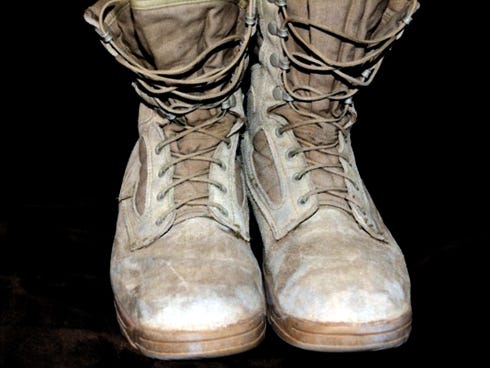
JACKSONVILLE — Wounded Warrior Project released the results of their 2014 Annual Alumni Survey today.
SEE a copy of the full report>>
Based on the responses of more than 21,000 wounded veterans, it includes the largest sample size of service members injured since Sept. 11 and is the most statistically relevant survey response of that population to date.
The results indicate the recent passage of sweeping legislation to improve care at the Department of Veterans Affairs (VA) comes at a time when more injured veterans are seeking that care as they move further away from their military service.
While not exclusive to VA care, the two most common problems in accessing both physical and mental healthcare were difficulty in scheduling appointments and lapsed or inconsistent treatment because of canceled appointments and switches in providers.
The survey also showed the primary type of current health insurance or coverage cited included Veterans Affairs at 59.2 percent, up from 52.7 percent in 2013. The percentage of warriors receiving VA disability benefits is 72 percent, up from 62.8 percent in 2013. Alumni with a VA disability rating of 80 percent or higher rose to 42.6 percent in 2014, from 36.2 percent in 2013.
The top resource used since deployment for addressing mental health concerns was VA medical centers at 62.5 percent, up from 54.1 percent in 2013.
“When our nation’s injured veterans speak to us, we must listen,” said Steve Nardizzi, WWP CEO. “Our survey data tells us where our warriors continue to struggle, allowing us to improve and strengthen our programs, and identify gaps in existing services and support. It is our sincere hope VA will do the same – listen to our injured veterans and rise to meet the challenge.”
Additional key findings include:
•The top five reported injuries and health problems experienced during post-Sept. 11 service were
1. sleep conditions (75.8 percent)
2. post-traumatic stress disorder (75.2 percent)
3. back, neck, and shoulder problems (72.3 percent)
4. depression (67.1 percent)
5. anxiety (64.2 percent)
•4 out of 5 warriorshave a friend who was seriously wounded or killed in action.
•Nearly 75 percent of warriorsreport the memory of an upsetting military experience has haunted them in the past month.
•59.2 percent of warriors say talking with another veteran is in their top five ways for coping with stress
•3 out of 4 warriors have less than a bachelor’s degree.
•The unemployment rate for respondents in the labor force is 13.9 percent.
•43.2 percent of warriorsreport having a traumatic brain injury (TBI).
•3 out of 10 warriorsneed the aid and attendance of another person because of their injuries and health problems; among them, more than one-fourth need more than 40 hours of aid per week.
•As a result of their injuries,7 percent of warriors are permanently housebound.
•82.3 percent of warriorsare overweight or obese.
This is the fifth consecutive year WWP has conducted this research. The year-over-year data will allow WWP to establish a baseline; identify trends; compare these outcomes with those of other military populations; and measure the impact of and inform changes to WWP programs and services.
Programs such as Peer Support, Project Odyssey, Soldier Ride, and Warriors to Work were created based on previous feedback from alumni; and focus on peer mentorship, mental health, physical well-being, and economic empowerment, respectively.
The survey also helped inform warriors of the Independence Program and Long-Term Support Trust, programs designed to safeguard care and support as veterans and their families confront their long-term needs and goals.
This article originally appeared on Crestview News Bulletin: Wounded Warrior Project releases new survey data
